Over the lychgate at St Mary’s is a carving, picked out in gold, that says our churchyard was established as a holy place for high and low, rich and poor, to rest together. And to some extent that elegy to openness and equality remains true today. Anyone who dies within the local area of our parish or who attends services at St Mary’s is able to have their ashes buried in our churchyard; and the church community is currently working to establish another dedicated area within the churchyard to allow this practice to continue.
But there is an offence against this principle of acknowledging the shared and equal value of all human lives in the eastern corner of our churchyard, standing to overlook Oak Hill Park. There stands a memorial to a life that is not marked by a slab or a gravestone, or still less by some of the wooden grave markers whose oak frames have somehow survived, weathered and worm-eaten, for 200 years.
our churchyard was established as a holy place for high and low, rich and poor, to rest together
The ornate, 2 storey high monolith that stands there makes it easy to tell who was once the highest of the high and richest of the rich, for he was the most powerful individual memorialised in our churchyard. His monument is so big that it was intended to be visible from his family home, Oak Hill House (now Oak Hill Theological College), which is about a mile away.
This memorial stands to the memory of Sir Simon Haughton Clarke, who was at one stage the seventh richest man in England outside of the royal family. As well as being the owner of Oak Hill House, much of the surrounding parkland, and an extensive collection of expensive art, he was the owner of 4110 human souls.
For Simon Haughton Clarke was a slave owner, and to work on his Jamaican estates producing sugar and rum to be exported to English markets he or his agents or his immediate family owned 4110 slaves, according to estimates recorded to establish the level of compensation to be paid to him for the loss of these ‘possessions’ following the abolition of slavery within the British Empire in 1832.
For Simon Haughton Clarke was a slave owner, and to work on his Jamaican estates producing sugar and rum to be exported to English markets he or his agents or his immediate family owned 4110 slaves, according to estimates recorded to establish the level of compensation to be paid to him for the loss of these ‘possessions’ following the abolition of slavery within the British Empire in 1832.
This claim of ownership over and abuse of black lives was, of course, far more of an offence against God’s love for all humanity and His desire to rescue all those who are oppressed and enslaved, than the building of the monument that still stands in our churchyard. But the monument’s existence, and its unchallenged, uncontextualized pride in the greatness of Simon Haughton Clarke, shocks me.
It shocks me into an awareness of how consistently the magnificence of the rich and powerful is remembered, when the very source of their wealth lies in the denial of freedom to others; and when there is a lack of memorial to the suffering that such men caused – to the suffering that enriched them, and also enriched our community and nation.
To those who he claimed to own, there is no memorial, other than perhaps the shadow cast on a clear day by Simon Haughton Clarke’s monolith: indicating an darkened absence of real public acknowledgement of the evil of their enslavement. And, similarly, the only record of the suffering caused on his Jamaican estates lies in the records of compensation paid out in exchange for those goods of which he was deprived by the abolition of slavery – and when I say goods, I mean the lives of black men, women and children, kept and forced to labour for the profit of our parishioner at the crack of an overseers whip.
Placing the Clarke monument in a more accurate historical context, which we might do be looking at it anew, means acknowledging that far away from East Barnet occurred events from which our community and its members benefitted; that they were enriched by the horrors and pain caused by slavery.
And because time – even to a historian – is not a fixed and static power, it also means making the effort to learn more of how the legacy of slavery continues to adversely affect ethnic minority communities here and now, for in part their inequal position in western society is still rooted in the racist justifications once invented to excuse the barbarism of the claim that one man might own another human.
far away from East Barnet occurred events from which our community and its members benefitted; that they were enriched by the horrors and pain caused by slavery.
Placing the Clarke monument in a more humane context means challenging ourselves, through an effort of information and imagination, to really discover the tragic and painful lives harmed by this one man who claimed he might own 4110 others.
Placing it a more godly context, which seems fitting given where it stands, means not condemning the errors of the past as if modern humanity is without its own monumental cruelties. It means being shocked, even knowing of their present problems, by our continued inability to truly live and die in the knowledge that in God and to God there is no inequality or division of the slave or the free: and that the words of eternal life are strangely liberating to the oppressed of every time and place.
